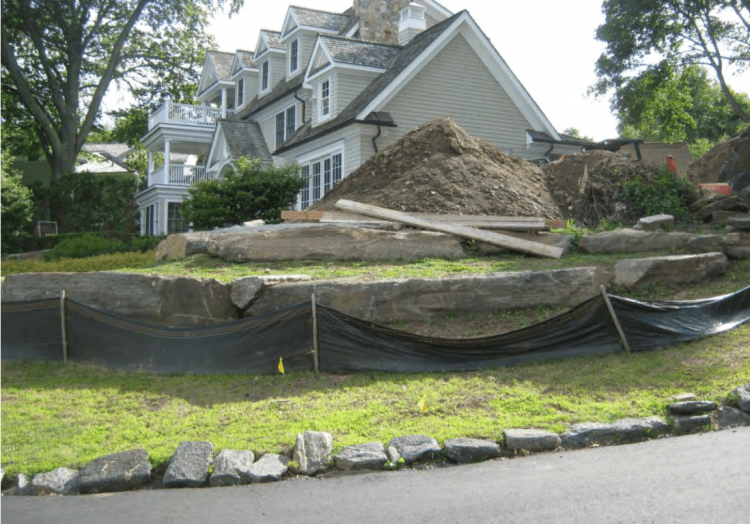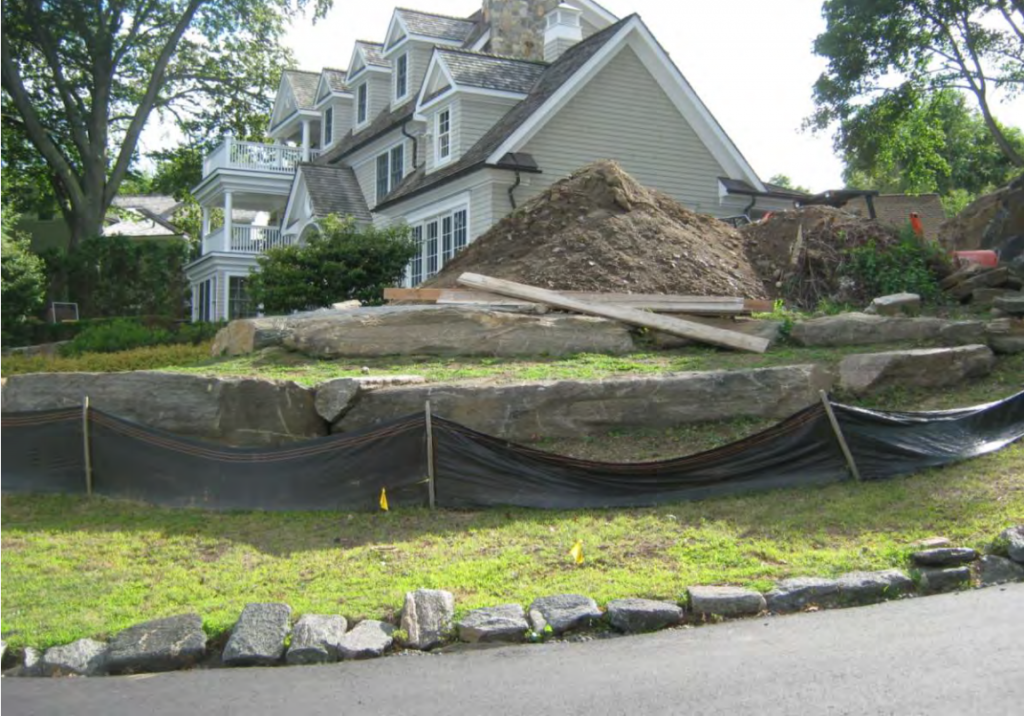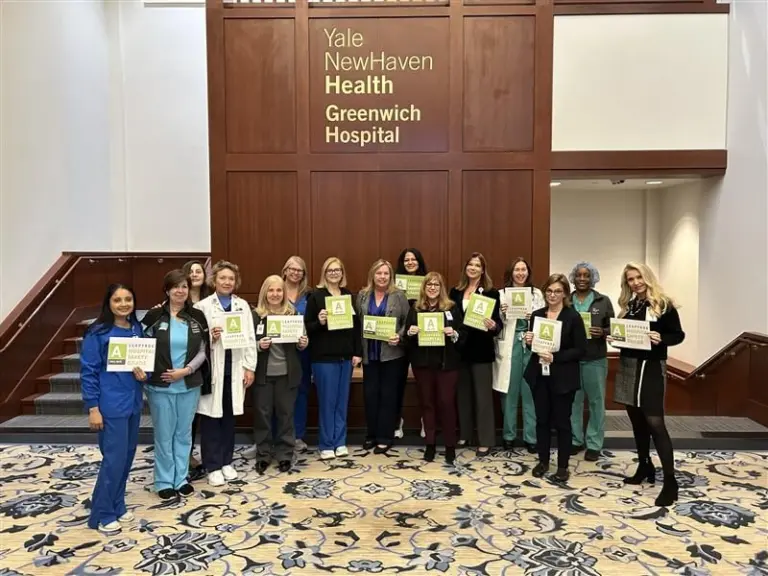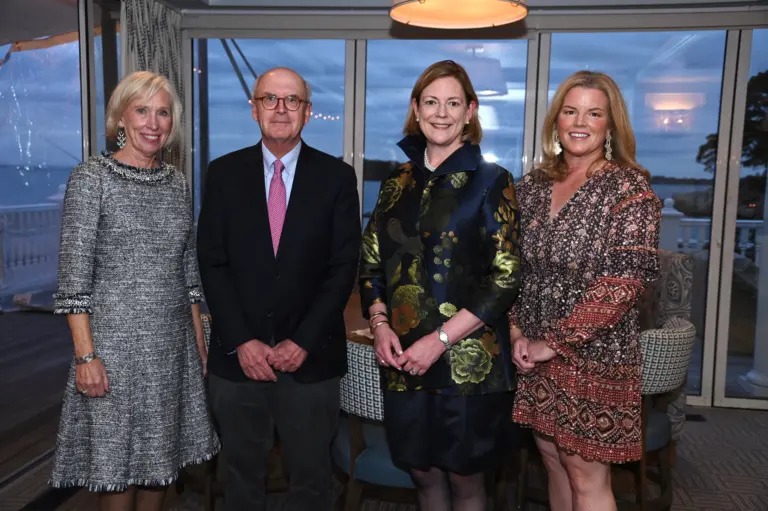

During last Thursday’s Board of Selectman meeting, a public hearing on the town’s acquisition of three contiguous cemeteries in western Greenwich—Byram Cemetery, the Lyon Cemetery, and the African-American Cemetery—allowed for objections and public comment on the proposed acquisition.
Sitting front row in the meeting room were six descendants of people believed to be buried on the sacred ground of 29 Byram Shore Road.
“As descendants of African Americans buried in the Byram African American cemetery, and as descendants of the Lyon family, our family applauds the effort of the town of Greenwich in wanting to preserve all three cemeteries,” said Teresa Vega. “These three cemeteries are testaments to the presences of these early settlers, as well as the presences of African Americans in Greenwich in the beginning.”
According to DNA tests done by Vega and her cousins, her fourth great-grandmother, “Peg,” was a slave of Daniel Lyon, who maintained a relationship with her owners even after emancipation.
“The original intent of our Lyon ancestors was to build a sacred burial place for their slaves and ex-slaves, and it was to give these people a final resting place where they could rest in peace for eternity undisturbed,” said Vega. “If anyone deserved to rest in peace, it is those people who either spent part or 100 percent of their lives slaving away.”
After months of research, connecting with distant relatives, and a visit to the burial site, Vega says she was appalled by what she found at the cemetery.
“We’re grateful to Jo Conboy and the other members of the Greenwich Preservation Trust for sounding the alarm,” Vega said. “We had the opportunity to see it for ourselves. It was mind boggling to see that our ancestral burial ground now looks like someone’s front lawn.”
It was less than three months ago that Vega, along with two of her cousins, visited the site to find the African American portion of the cemetery had been encroached on by neighbors. What showed on historical documents as a burial site was now made to look like an extension of the neighbor’s property.
Documents dating back to the early 20th century show conflicting maps; one suggests that the cemeteries are a single parcel of land, and another suggests that they are three separate parcels.
According to Denise Savageau, director of the Greenwich Conservation Commission, a hurdle in the acquisition process has been finding out who owned the cemeteries when they were active burying grounds.
After the hiring of the consulting firm, Historical Perspectives, the site history and deed history came back with little clarity.

“One of the challenges was that [Historical Perspectives] did not find who the owner of the cemetery was,” said Savageau. “In that report, it was recommended by the state archeologist and by Historical Perspectives to the Conservation Commission that the town acquire the abandoned cemetery so that it would not be further desecrated and that it would properly maintained and protected as an ancient cemetery.”
She says that no further action can be done until the town acquires the land. But she added that the land could be interpreted as already owned by the town based on documents that show the cemetery as one parcel of land.
“These are cemeteries, if you look up ownership on in the Tax Assessor’s card and in our Geographical Information System (GIS), it says, for example, for Byram Cemetery, the owner reads ‘Byram Cemetery,’” said Savageau. “It doesn’t really have an owner.”
Public comment called for anyone with a deed to the cemetery to step forward and claim the land, but none was presented in the meeting. Instead, neighbors of the property questioned whether or not the property had any historical value, or even existed at all as a cemetery.
Phillip Russell, the attorney for the homeowners adjacent to the cemetery, spoke on behalf of the neighboring homeowners and addressed their recent encroachment on the land. Images in a documentary study provided by Historical Perspectives for the town show that the land was disturbed in the form of grade cutting, retaining wall installation, rock face removal, and soil stockpiling.
The homeowners, the Stewarts, say via their attorney that the use of a driveway that cuts through the property is not being disputed by anyone as an easement, and that the ownership of the parcel of land as a cemetery has no evidence to back up that claim.
“The Stewarts are not categorically opposed to the designation of this property as a cemetery,” said Russell, referring to the site. “We are not here to offend anyone.”
According to the documentary study, the encroachment on the cemetery came to the attention of the town in August 2014. The study of the land states, “At that time it was evident that large stone blocks had been placed along the eastern and northern edges of the African American section of the cemetery, fill had been added and the area had been seeded.”
The Stewarts completed a limited Ground Penetrating Radar (GPR) survey in September 2013 that found a lack the information relevant to establishing potential presence or absence of burials at the cemetery site. But the excavations in the survey were said to not have been done by a professional archaeologist or physical anthropologist, and lacked details about the test area.
When it was discovered that construction had begun on the land, the town stepped in to stop any further desecration to the neighboring property.
“The Stewarts bought this property in 2013 and set about building a house to move into as their primary residence,” said Russell. “During that construction, they placed some fill onto what is the designated plot and they were immediately the subject of first a verbal and then a formal cease and desist order.”
The attorney read a letter by late Byram resident Chris Antonik, describing the excavated land as having no burial remains.
“Such colored cemetery certainly has not existed during my residency,” wrote Antonik. “There have never been any cemetery markers of any kind at the property.”
He continued that the property had always been used as a side yard and the driveway for the house at 11 Byram Dock Street.
“When I first moved to my home, this side yard had a circular driveway over the majority of the property,” Antonik wrote. “In 2006, the house was purchased by a developer and rebuilt. During construction, the side yard was excavated which I witnessed, and the only thing excavated there were old clay septic tiles and there were no burial remains or burial tombs to be found.”
Russell too said that the underground radar found no evidence of burial remains or underground tombs.
“The so-called colored cemetery was long ago removed, if it ever existed,” said Russell, who added that the other two parcels of land are well documented, unlike the parcel adjacent to his client’s property.
“Respectfully, I think we are premature in incorporating this portion. My request, on behalf of the Stewarts, is that this particular third portion of this application be set aside. It’s our position that any decision by the Board of Selectmen presumes that this is an African American cemetery. There is no real evidence either that there was one here, or that if there was one there, this is it.”
He argued that the driveway in use by the Stewarts acknowledges the easement, and he called for dialogue between the Stewarts and the town about it.
Between the raised level of the other neighboring cemeteries, a gravel driveway leads to the back of the residence that is used by the Stewarts.
“There is an easement that runs across this road in favor of the Stewarts that no one is disputing,” said Russell. The attorney admitted to not forwarding questions and concerns beforehand to the town’s Conservation Committee or the Town Attorney.
As part of public hearing protocol, no action was taken by the board, but Vega remains passionate about protecting the sacred burial grounds.
“I think what they said defies historical evidence,” said Vega, who writes about her discoveries on her own blog at radiantrootsboricuabranches.com. “Why would the Lyons in 1890 protect the site from further desecration?”




